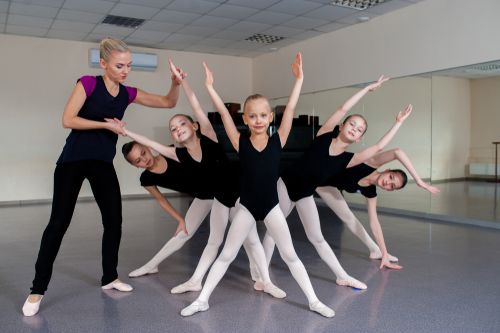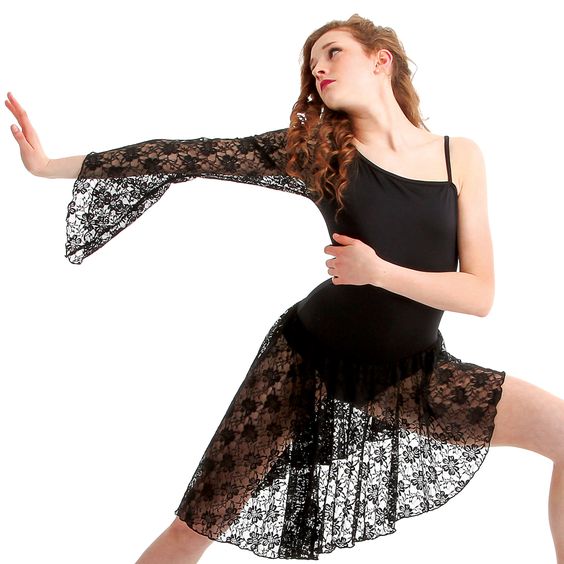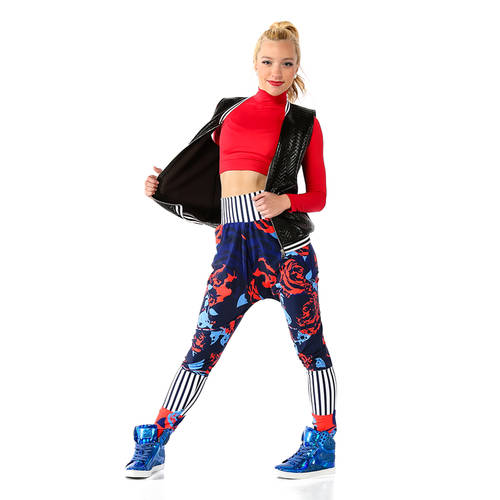Dance Talk
Our dance season never ends. Learn dance tips from the best.
Learning to Choreograph Your Own Dance


Here are our top 5 tips when learning to choreograph your own dance!
1) Study different dance styles and techniques to get a sense of what you like and what you want to incorporate into your own choreography.
2) Start small by experimenting with simple movements and combinations. As you become more comfortable, you can start to add more complexity.
3) Use music to inspire your choreography. Listen to different songs and think about how you can use the rhythms, beats, and lyrics to create movement.
4) Practice, practice, practice. The more you dance and experiment with different movements, the more confident and comfortable you will become with choreography.
5) Get feedback from other dancers and choreographers. They can offer constructive criticism and help you improve your choreography.
You love to dance, but now you want to choreograph. Where to begin? It takes some time and practice to get it right. It can also be a little intimidating. As a dancer, you're used to taking instruction from your teacher. But once you're the choreographer, you're the one calling the shots -- beyond just what cheap dance costumes to wear. It can all be a little stressful to take in.
But, if you have a true passion for choreography, then you should go for it. You'll be so glad you did. Here's how:
Know your audience.
Before you begin, you have to take your audience into account. For instance, ask yourself: Will the dance be performed before the general public, or in a room full of parents and grandparents? What kind of dance routine do you think they are expecting? If you want your work to resonate with them, then you need to keep them in mind as you're going through the process of choreographing. It's also important to consider the venue and how that can impact your routine. For instance, a dance routine at halftime during a football game might look different than one on a stage in a small location.
Fuel your inspiration.
You know you want to choreograph. But where can you turn for good ideas and inspiration? Sometimes, it's easy to get stuck. But in reality, you don't need to look much beyond everyday life. You'd be surprised at the sources of inspiration that are all around you. For instance, nature, a good book you just read, a memory of an experience that touched you, or simply your own fantasies are all fuel for creativity in choreography. Use these as starting points for a brainstorming session. During it, every idea should be on the table so you don't limit yourself.
Think about the music.

Now that you have a key concept to focus on, you have to think about your music. Which selection will best support it? Should you go for a hip-hop selection -- complete with hip hop outfits -- or will something slower and more dramatic be a better fit for your theme?
Once you identify a song, take the time to listen to it many times before making your final decision. And don't just listen to it in the studio. Listen to it at home when you're doing the dishes, when you're driving around in your car, and at the gym when you're working out. Listen to it at faster speeds, as well as slower ones. This will help you to really get a sense of the rhythm and the quality of the music so you can design dance moves that will fit best with it.
Also, if the song is too long -- for instance, your routine needs to be two minutes and the song is four -- then you're also going to have to do some editing.
Start creating your moves.
Once you have the concept and the music in place, your dance routine should be coming together more clearly in your head. That said, still stay open to the possibilities. You might have a specific vision in mind. However, you never know when inspiration might hit and result in something better. Just make sure that whatever you do end up choreographing it's a fit for the music you selected.
During this part of the process, just begin moving, trying out different steps and sequences. Explore various dance moves, combinations and patterns to see what feels right. Don't be afraid to push the envelope or get silly. You never know where a new move, combination or transition might come from. Just make sure that as you're going through this process, you're either videoing yourself or taking notes so you don't forget the steps.
Chunk them into sections.
Once you have some individual steps and moves you like, chunk them into sections and start aligning them with different points in the music. As you do this, make sure you're putting all the sections together in a way that makes sense overall. Keep track of the chunks that you're creating, too. It will be much easier for you to practice the routine, or for you to teach it to your fellow dancers when it's chunked into specific sections.
Incorporate transitions.
Once you have the basic flow of your dance routine worked out, the finishing touch should be the transitions. This ensures there is fluidity between one section of the dance to the next. While you might have some strong sections overall, if you have weak transitions, it will impact the overall look and feel of the routine. The dance will be hard for the audience to follow and they will be more focused on the structure rather than taking in the routine as a whole.
Think about cheap dance costumes and props.
Once you have the dance ironed out and thoroughly choreographed, it's important to think about props and costumes next. When you're doing so, keep the music you've selected in mind, as well as the overall theme. A classical piece is going to look strange if you or your fellow dancers are in hip hop outfits. On the other hand, if you have an edgier, more dramatic performance in mind, then a simple black leotard might not do the trick either. Props too can add a level of drama and flair to your dance, so are important to consider, as well. Just make sure they complement your routine and aren't simply used as an afterthought. Also, make sure to remember Leotards.
Be flexible.
If other dancers will be performing with you, then it's up to you to teach them the steps. At this point, it's important to stay true to your vision, but also not to be rigid, either. Another dancer could have an idea that could potentially add value to your initial dance theme and concept. Or, if you're realizing that a certain step or move is too hard to master, or isn't working out as you'd hoped, then be open to changing it.
When you're new at choreography, it's going to take plenty of patience and hard work to achieve all-star level. But follow the steps above and you'll be well on your way to creating your first routine with confidence.

Follow Us
Follow Us online, join our conversations, engage with our teams around the world!